Part of the blog series for the 2017 theme, Radical Ritual.
By S. Megan Heller, BRC Census Researcher / Manager 2004-2015
(with a shit load of help from Picky!)
Like a lot of good stories about projects with academic origins, this one starts with a research problem. In the early years of the Black Rock City Census, we handed out questionnaires at gathering spots like Playa Info and the Center Camp Café. We focused our efforts on increasing participation with the vague hope that eventually everyone would want to join in the fun. Volunteers would go around with our mutated vehicle, the Census Wagon, to pass out and collect the completed forms, even at nighttime. We loved every minute of it. But we knew our findings were skewed – that is, driven by people who took the time to fill out the form of their own accord. In 2012, we designed a new and better way of collecting data using a brief questionnaire that would be representative of all Burners. Eventually the longer Census form moved online after the Burn, and we randomly selected participants at to fill out the short form on playa, in order to correct for self-selection bias. Basically, we got really geeky about our sampling methods back in 2012.
Year after year, Census data show that Burners are heterogeneous along many important dimensions, among them age, income, and how we spiritually and sexually self-identify, and yet so many people can feel a part of Black Rock City. Our Census volunteers are also a diverse group – some come from research or academic backgrounds, sure, but many don’t. We can’t expect everyone to get excited about sampling methodology. Some are willing to brush up on their statistics skills in order to understand what we are doing and why. Plenty of others just want to get weird in the entrance lanes and talk to Burners driving sweet rigs. That’s cool! Not everyone gives a damn to understand the nitty-gritty details about non-response bias, selection bias, and variable weighting. We decided early on that shouldn’t exclude such people from the team. If you want to volunteer for Census, we’re happy to have you. Yet it is important for all our data collectors to stick to the consent script and the sampling protocols, so training our new teammates is crucial. Back in 2012, my research problem was how to design a training process that united different types of volunteers into one well-functioning data collection team. My goal had to be to help everyone joining the team feel included and get excited about science.
“I’ve been professionally employed as a Data Scientist for 10 years, and I’ve never felt like a ‘real’ scientist because I don’t work in a lab or get to wear a lab coat. My experience with the Census team and doing data collection in the field (in an awesomely silly way) made me realize my definition of scientist was artificially limited. I do science – that’s what makes me a scientist.” – Mind Blow
As our plans to institute the first random sample came together, a very experienced team leader, DA, coached me. He helped me brainstorm about our new uniforms and design our new logo. When I expressed my concerns that we could never be as cool as the Department of Public Works, DA reminded me that “Smart is Sexy!” Duh! Of course it is. That’s when I put out a call to our team to start gathering up all the lab coats we could find.
Then it was time for our first training. Even those volunteers who had a more limited background with statistics and data collection still needed to understand the importance of the methodology and feel some sense of gravitas about applying it. We designed a training session to teach the particulars, but it all felt too… Serious. And on top of our project, which involves paperwork and filling in bubbles? Way too serious. My colleagues agreed. We needed to get silly. That’s when I came up with the Sacrament of the Scientist.
“[After the Sacrament,] I felt I was a genuine, empowered member of the Census team, a feeling which quickly evaporated when the training session showed me how much I was doing wrong.” – (Earnest and Sarcastic) Spewey.
The previous year the theme was Rites of Passage. I realized what we needed was an initiation ritual. Like Dr. Luhrmann described to Caveat, we needed something that would help people internalize the values of Census, but in a way that felt true to this cacophonous setting.
I’ve often felt like my funny bone is perpetually sprained, but Burning Man gives me the opportunity to flex the adjacent muscles, at least. Luckily, Burning Man knows silly. We know cacophony. We know ritual. Come; be initiated into the Sacred Order of Empirical Evidence:
- Find yourself a suitably bedazzled lab coat from our overstuffed racks.
- Look through the data plaques from previous years and find a statistic that interests/intrigues/confuses/amuses/all-of-the-above-s you.
“I have newfound confidence to pretend I am a credible scientist. That, and my lab coat make me unbearable, I mean, unstoppable.” – Spewey
- Return to the lab-womb. And repeat after me:
“As a scientist of the Census lab…
“We ask the questions…
“We collect the data…
“We analyze the data…
“…and we report the truth.”
- One at a time, come forward. Defend your data point and cite your source.
- Eat of this bread (read: slightly-stale cracker), for it is the body of academic literature.
- Drink of this cup (read: slightly-too-tart lemonade), for it is the blood (and sweat… and tears) of your academic forebears.
- Be anointed with this playa-dust-mud bindi.
- And accept the welcoming hug of your new nerdy mentor.
“Before I was permitted to pass from the sitting area in the Census Lounge into the highly-restricted, ivy-festooned training room, I had to commit myself to BRC Census and accept the sacrament of a wafer and some non-alcoholic drink, the type I always try to avoid.” – Spewey
The Sacrament has been administered by three people since 2012, and the ritual changes slightly each time. But what doesn’t seem to change is people are genuinely touched by it.
“The ritual is a dimension of how Census practices ‘radical inclusion.’ There is a transition from being an outsider – a stranger – to being on the inside, and there is something pretty special about this feeling of belonging… A few people even teared up when I hugged them.” –Scribble, erstwhile Census manager
“It was an excellent introduction to the Census team, in terms of helping me to understand their approach to science and Burning Man… I felt like they knew what they were talking about, but still didn’t take themselves too seriously.” – anon.
In my pre-Burning Man life, I had very little formal religious training. I had memories of rituals from which I was excluded. I experienced a lack of the feelings of belonging, which anthropologist Victor Turner called communitas. I would go to mass with my Catholic family, but I wasn’t allowed to participate. I attended a school at a synagogue, but my Jewish family was not part of any Jewish religious community when I was growing up. On the other hand, my youth was all about questioning the world as it is – a lauded practice among my Jewish and formerly-Catholic family members.
“I’m glad to have gotten out of the homophobic and sex-shaming parts of my Catholic heritage – but I do love all the ‘smells and bells…’ I really love the concept of taking this ‘religious’ experience and using it in real life.” – Mind Blow
When I became an academic, it was no different. Historically, most researchers have actively attempted to remain more or less separate from the populations they study in order to maintain objectivity. Even in cases where researchers employed local people to collect data in the field, those researchers still maintained a marked distance from those assistants, even as they sought to be accepted and build rapport with community members. An outsider’s perspective may allow a person to perceive realities that natives cannot. I viewed my research as perhaps falling under the category of “native ethnography,” an anthropologist researching her own people. But as a native ethnographer, enmeshment with those I studied could be viewed as compromising my objectivity. “Going native” can blind a person to some truths. But returning to the event year after year made me a Burner in the eyes of the community. This insider positionality could not be avoided.
Burning Man is not like other field sites based on kinship and residence. It is a place where everyone is invited to experience a sense of belonging and actively participate as full citizens in the community. So I tried to incorporate that principle of inclusion into our Census methodology – though initially I didn’t have the vocabulary to describe it. Now, I do. In recent years I have learned about medical researchers adopting a community-based approach that prioritize partnerships with local communities when crafting research questions, developing methodologies, and collecting and analyzing data. The goal of this partnered approach is to break down the boundary between academia and the people who are the subject of the research. That’s what the BRC Census does. We partner with researchers from several universities in multiple countries, we work with different departments at Burning Man Project, we solicit input from community members and recruit them as volunteers to help us collect and analyze data, and disseminate the results widely (not just in peer-reviewed journals). We ask questions that participants and organizers (not just researchers) really want to know about Burners, and along the way, we build trust with the community at large by being transparent about how we collect and use data . This is the essence of building a community-based academic research project.
“I loved the mix of solemnity and self-mockery in the Sacrament of the Scientist. Sitting down with everyone together for training, it was fun having just gone through a shared experience with them.” – anon.
Childhood-me would never have guessed that adulthood-me would integrate religious rituals so thoroughly into my life and work. But as I get older, and as I have studied other cultures, I recognize the importance that symbols – lab coats, games, oaths, meals – play in creating and legitimating feelings of inclusion and belonging. And now that I feel like an enduring and integral part of a community, I want to make sure that the people in my life – especially my kids – feel they belong somewhere as well. I am making sure that my children are learning their father’s and grandfather’s language (Spanish) and recently we joined a non-denominational synagogue and started observing Shabbat. My baby Burners (three and seven years old, with two and seven Burns under their respective belts) have taken to Judiasm like gangbusters. And of course, they also love to watch the Man burn!
Breaking bread, sharing juice, reciting prayers, and taking part in a ritual shared with others – this helps children, adults, community members, and our volunteers all feel like a committed part of a greater family. Radical.
Note: Apologies to any Catholic, Jewish, and Hindu people with a sprained funny bone, who do not appreciate this blatant cultural appropriation of their rituals.

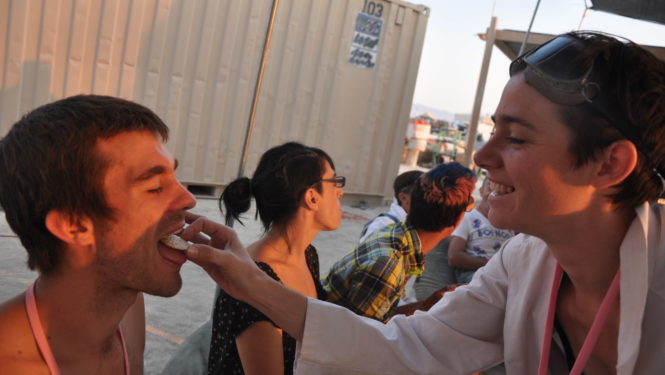
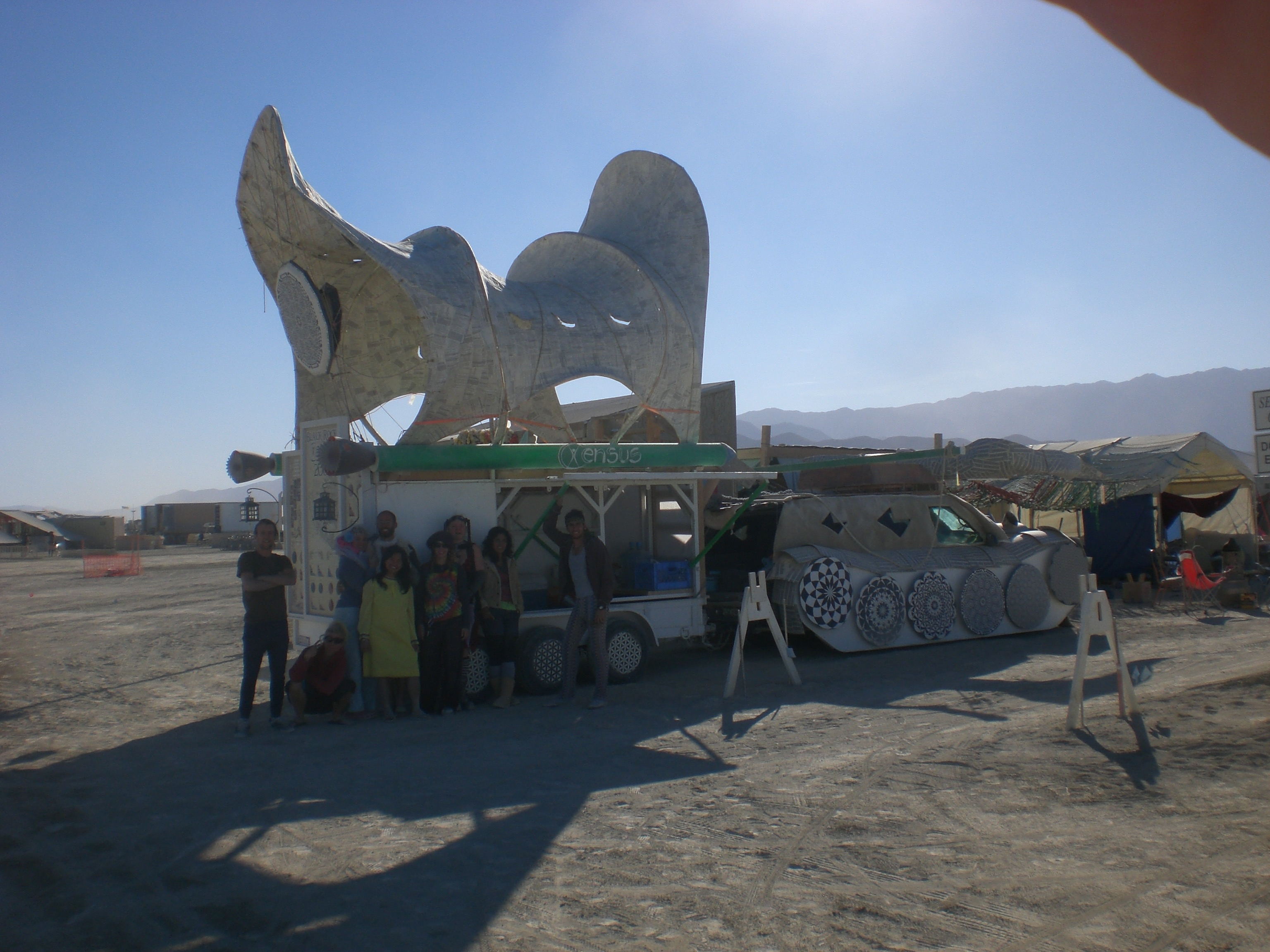
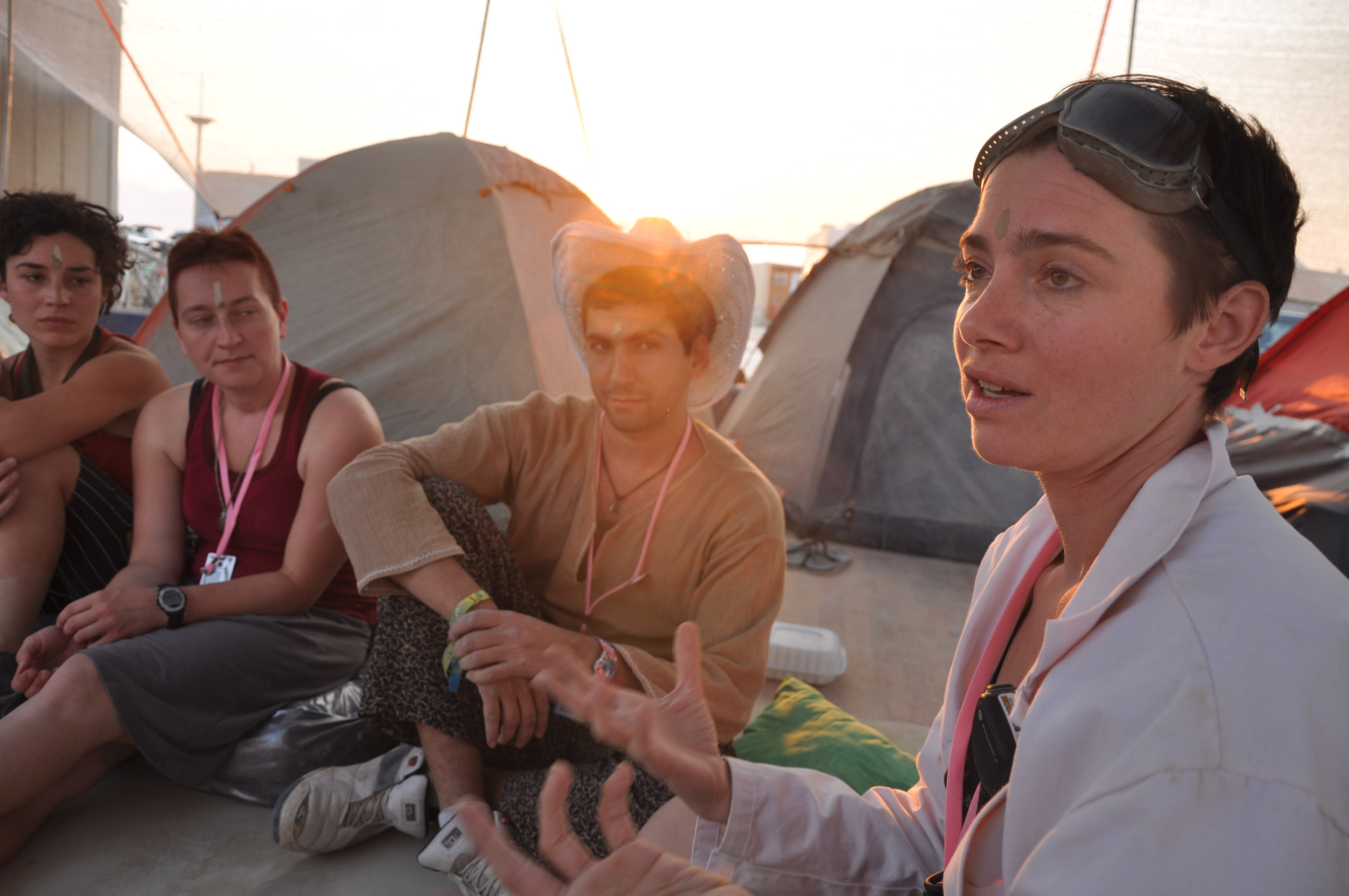
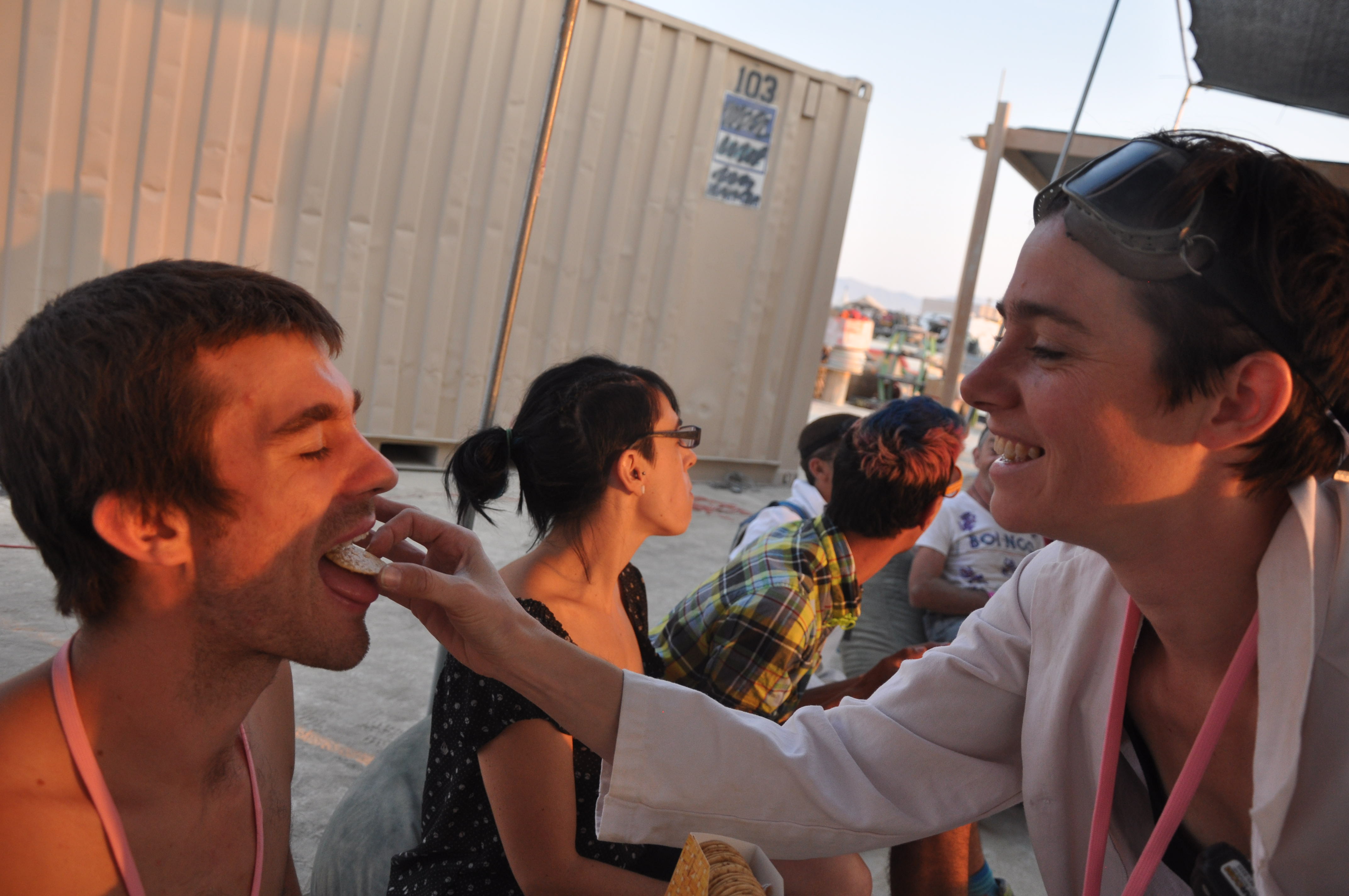
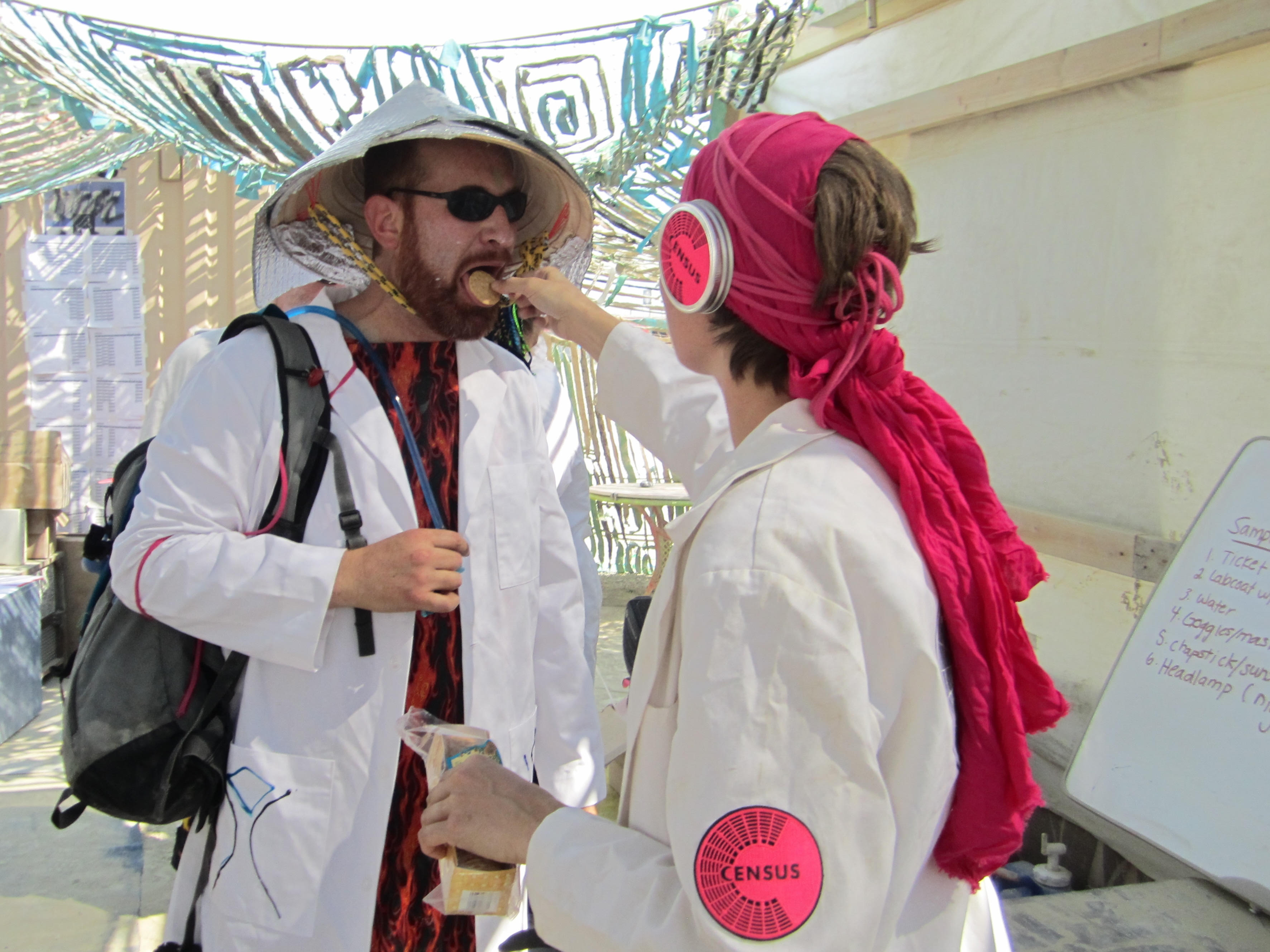

gods and goddesses, I love you people!
Report comment
I’m a first time burner and would Ike to get involved with your group. I will be there alone and am intrigued with what you do
Report comment
Hello Vivaciousn3ss and thank you for your interest in Black Rock City Census! It is almost the time for us to open up volunteer shifts. If you don’t already have a Burner Profile, go to https://profiles.burningman.org/participate/register/ to create one. Once you have a Burner Profile, go to http://profiles.burningman.org and click on “Participate,” then “Volunteer Questionnaire.” There will be checkboxes where you can choose which teams you would like to sign up for… and Census is one of the checkboxes! This will get you signed up to receive email notifications from us and allow you access to our shift signups on playa. You can read more about Census and what we do on playa here: https://burningman.org/event/volunteering/teams/census/
If you have any trouble, please email us at censusvolunteercoordinators@burningman.org. We so look forward to seeing you in the dust.
Report comment
Comments are closed.